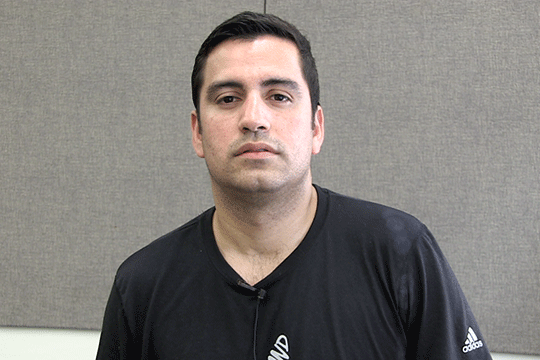Giving Immigrant Students a Sporting Chance: George Diaz (Ed.D., Physical Education)

Life before TC
Growing up in Mayagüez, Puerto Rico, George Diaz had an older sister with a severe physical disability who had to crawl up the stairs in her school because there was no elevator. “I wanted to teach my sister sports, but she died before I was able to,” says Diaz, who played basketball and baseball on club teams. Today, after spending two years in the Army and then earning his physical education degree from the University of Puerto Rico, Diaz is interested physical education for the disabled and in attitudes toward physical education among Latino students. He moved to New York City in 2003, and has been a physical education teacher and administrator at the Bronx High School of Business ever since.
Why TC
Arriving in New York City, Diaz found it difficult to adjust to the climate, the city, and working in English. He empathized with Latino and other immigrant students, especially those who arrived as adolescents. He decided to do doctoral research to help improve the effectiveness of physical education, a field in which teachers do not have co-teachers to help with English language learners. “There was almost no literature on Latinos and physical education,” he says. “That was affecting the kids in my field.”
TC Takeaway
At TC, Diaz worked with Stephen Silverman, Professor of Education and Chair of the Department of Biobehavioral Sciences. “Dr. Silverman is fantastic,” Diaz says. “Our seminar group was ruthless, and that’s what you need. I grew up a lot.” For his dissertation, Diaz adapted Silverman’s physical education attitudinal assessment instrument and surveyed over 1,000 Latino students in New York City between the ages 13 and19. Among other things, his findings showed the importance of language in attitudes toward physical education. Students who are born in the United States or who arrive at an early age are more likely to have a positive attitude, as are those who speak English at home. For older arrivals, programs in English as a Second Language have positive effects. Visual forms of instruction could also make Latino students feel more welcome, Diaz believes.
What’s Next
Diaz completed his doctorate while working full-time as a physical education teacher, athletic director and coach. He wants to continue his research and expand it to other underprivileged communities. He hopes his next position will be as an administrator at the district or city level, where he can help implement new research for the benefit of all students.
Published Friday, May 1, 2015